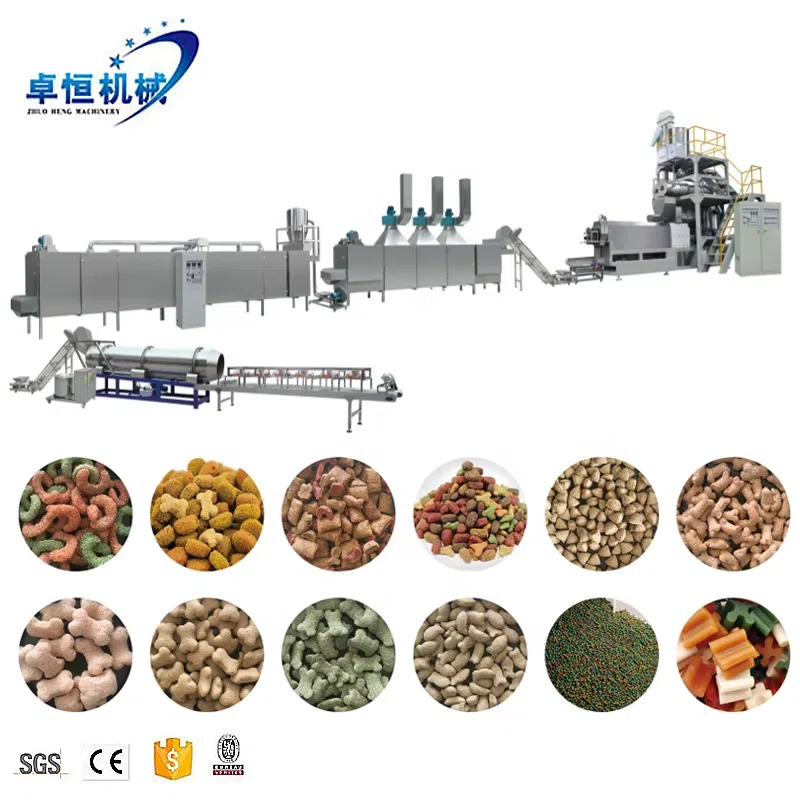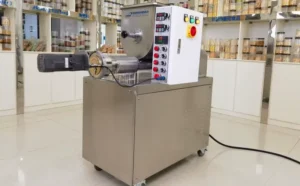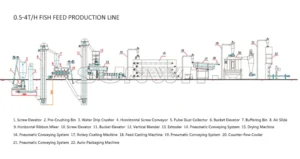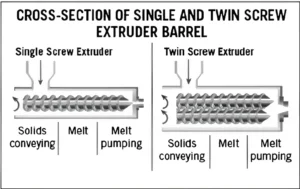Introduction
Selecting the right extruder is a pivotal decision for any pet food manufacturer looking to boost productivity, ensure product consistency, and maintain high quality. In my decade of experience—walking through bustling factories and consulting with hundreds of clients—I’ve learned that the decision goes beyond technical specs. It involves balancing capacity, versatility, operational costs, and future scalability, all while ensuring compliance with strict food safety standards.

1. Key Features When Choosing a Food extrusion Machine
When selecting an food extruder system, consider factors like:
Production Capacity: Match your daily or hourly throughput goals (e.g., 500–2,000 kg/h).
Ingredient Versatility: Can the machine handle proteins, grains, fibers, and fats in various ratios?
Ease of Cleaning: Rapid CIP (Clean-in-Place) or quick-disassemble designs reduce downtime.
Durability: High-wear components (screw, barrel) made of alloy steel for abrasive mixes.
Energy Efficiency: Variable-frequency drives, optimized screw geometry, and thermal insulation.
Customizable Settings: Programmable screw speed, barrel zones, and die configurations.
Safety Features: Interlocks, emergency stops, and hygienic design conforming to CE/FDA.
Manufacturer Reputation: Reliable technical support, spare parts availability, and training services.
2. Single-Screw vs. Twin-Screw Extruders
Choosing between a single-screw and a twin-screw system hinges on your product line and operational goals.
2.1 Single-Screw Extruders
Single-screw extruders excel in simplicity and lower capital investment. They work best for straightforward recipes where ingredient ratios remain stable. Maintenance is simpler, with fewer moving parts and lower spare-part costs.

2.2 Twin-Screw Extruders
Twin-screw extruders offer superior mixing, better control of shear and temperature, and easier handling of high-moisture or fiber-rich blends. They’re ideal for advanced pet treats, expanded kibbles, and products requiring unique textures.

3. Production Capacity & Throughput
Capacity planning starts with your market forecast. A line rated at 1,000 kg/h running 16 hours/day translates to ~16 metric tons daily. Factor in cleaning, maintenance, and changeover time to avoid bottlenecks.
Advanced models achieve higher speeds by running screws at 150–180 RPM, but this requires robust gearboxes and powerful motors. At Zhuoheng, our high-speed extruders strike a balance—delivering up to 120 RPM on a lightweight gearbox to reduce energy consumption and capital cost.
4. Ease of Cleaning & Sanitation
Downtime for cleaning can cost hundreds of kilograms in lost production. Look for:
Quick-release clamps and flanges.
Hygienic screw designs with minimal dead zones.
Steam or CIP-ready barrel jackets.
Modular die plates for rapid swap-out.
Our modular extrusion barrels can be disassembled in under 30 minutes, slashing weekly maintenance windows by 40%.
5. Energy Efficiency & Cost Savings
Energy use represents up to 30% of OPEX in extrusion lines. Key design elements include:
Variable-frequency motor drives for screw speed control.
Insulated barrel sections to retain heat.
Regenerative braking on haul-off units.
Clients report a 15% reduction in kWh/kg after retrofitting our VFD packages and optimized screw profiles.
6. Safety Features & After-Sales Support
Invest in machines with CE/FDA‑compliant safety guards, interlocked access doors, and overload protection. Equally important is the manufacturer’s commitment to service:
24/7 remote diagnostics.
On-site commissioning and training.
Guaranteed spare-part delivery within 72 hours.
At Zhuoheng, we back every line with a 2‑year warranty and a dedicated service team in your time zone.
7. Essential Auxiliary Equipment
7.1 Feeders
Gravimetric or volumetric feeders ensure precise dosing, especially for vitamin and mineral blends.
7.2 Cooling & Heating Systems
Ceramic heaters and water-cooled barrel zones maintain stable melt profiles.
7.3 Cutting & Haul-Off
Adjustable rotary knives and extendable pullers tailor product length and shape.
7.4 Dehumidifiers
Dryers ahead of the extruder eliminate moisture-related defects in kibble expansion.
8. Our Custom Extrusion Solutions
Leveraging our in‑house R&D and 100,000 pcs/month capacity, we design turnkey lines for pet food processors worldwide. Recent projects include:
Compact 500 kg/h lab-scale pilot for recipe development.
Modular 1.2 t/h plant with automated packaging integration.
Hybrid extruder with dual heads for simultaneous kibble and snack production.
Contact us to tailor a line that meets your throughput, footprint, and budget requirements.

Q&A: Your Pet Food Extrusion Questions Answered
Q: What screw speed is best for crunchy kibble?
A: Start at 100 RPM and incrementally increase until you achieve the desired expansion without scorching the mix.
Q: How often should I replace the screw and barrel?
A: It depends on abrasiveness—typically every 6–12 months under continuous operation.
Q: Can I process wet protein meals directly?
A: Yes, a twin‑screw extruder with vented barrels and proper dehydration zones handles up to 20% moisture.
Q: How do I scale from pilot to full production?
A: Maintain geometric similarity—screw L/D ratio, channel depth, and die design—to replicate performance at larger capacities.






